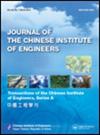Effectiveness of the red-edge band of RapidEye in land cover classification
IF 1.2
4区 工程技术
Q3 ENGINEERING, MULTIDISCIPLINARY
Journal of the Chinese Institute of Engineers
Pub Date : 2022-11-13
DOI:10.1080/02533839.2022.2141339
引用次数: 0
Abstract
ABSTRACT This study examined the effectiveness of the red-edge band using RapidEye satellite images for land cover classification. The analysis comprises three schemes for evaluating the effectiveness of the red-edge band: principal component analysis (PCA), vegetation index, and supervised image classification. The factor loadings computed by means of PCA were applied to analyze the importance of each band in the training samples. The analysis results of the factor loadings indicated that the red-edge band performed better than the visible band in the vegetation region. When rice paddy and peanuts were classified using the NDVI_RE, the improvement in accuracy was approximately 7%. Further, the accuracy of rice paddy classification using CMFI_RE was improved by approximately 6%. It can thus be inferred that the red-edge band made a certain contribution to vegetation classification. In land cover classification using reflectance, the accuracy of the support vector machine (SVM) was higher than that of the maximum likelihood classifier (MLC), the iterative self-organizing data analysis technique, and the K-means algorithm. When the red-edge band was included, the overall accuracy improved from 1% to 3%. The results of our experiments indicated that the red-edge band contributed marginally to land cover classification.RapidEye红边带在土地覆盖分类中的有效性
摘要:本研究利用RapidEye卫星图像验证了红边波段在土地覆盖分类中的有效性。分析包括主成分分析(PCA)、植被指数和监督图像分类三种评价红边带有效性的方案。采用主成分分析法计算因子负荷,分析训练样本中各波段的重要性。因子负荷分析结果表明,在植被区红边波段表现优于可见光波段。当使用NDVI_RE对稻田和花生进行分类时,准确率提高了约7%。此外,利用CMFI_RE进行稻田分类的准确率提高了约6%。由此可以推断,红边带对植被分类有一定贡献。在基于反射率的土地覆盖分类中,支持向量机(SVM)的分类精度高于最大似然分类器(MLC)、迭代自组织数据分析技术和K-means算法。当包括红边带时,整体精度从1%提高到3%。实验结果表明,红边带对土地覆被分类的贡献不大。
本文章由计算机程序翻译,如有差异,请以英文原文为准。
求助全文
约1分钟内获得全文
求助全文
来源期刊
CiteScore
2.30
自引率
9.10%
发文量
57
审稿时长
6.8 months
期刊介绍:
Encompassing a wide range of engineering disciplines and industrial applications, JCIE includes the following topics:
1.Chemical engineering
2.Civil engineering
3.Computer engineering
4.Electrical engineering
5.Electronics
6.Mechanical engineering
and fields related to the above.

 求助内容:
求助内容: 应助结果提醒方式:
应助结果提醒方式:


